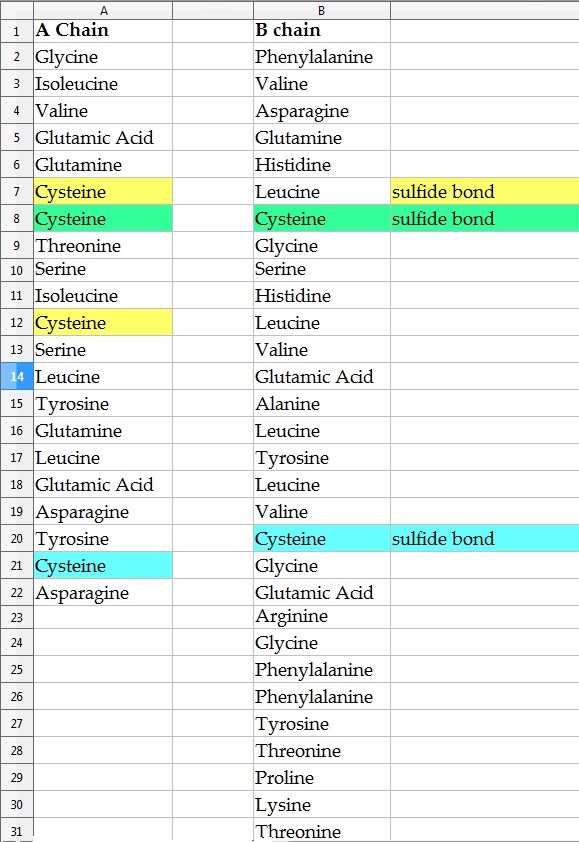| One of four nucleotides interpreted in groups of three gives 64 (4x4x4) possible |
| combinations. Most living things code for twenty different compounds called amino |
|
acids. DNA is read by RNA and the sequence of the nucleotides in the DNA |
| determines the order of amino acids to be bolted together to form a protein like |
| hemoglobin or insulin. Human insulin is made up of 51 amino acids in two chains |
| (shown below) - insulin from pigs, sheep and cattle is similar. |
 |
| Glycine, the first amino acid, can be coded for by four nucleotide sequences: |
| they all start with two guanine nucleotides. If someone's DNA for the A |
| chain starts with GG (and has a third nucleotide) all is well. Next, for the |
| DNA to produce useful insulin (to avoid diabetes, among other things) |
| what is needed is nucleotides coding for the amino acid isoleucine. The |
| next two nucleotides have to be AT (adenine and thymine) and the sixth |
| nucleotide can be adenine, cystine or thymine (A or C or T) but not Guanine |
| because the triplet ATG has a special meaning. Most of the time, if the |
| fourth through sixth nucleotides code for isoleucine there will be useful insulin |
| produced. Things are less clear if the sixth nucleotide is guanine (G). Some |
| proteins will still function with amino acid changes. The nucleotide triplet ATG |
| often serves to mark the beginning of a gene. The nucleotide triplets TAA, TAG |
| and TGA mark the end of a gene. When the DNA is more or less normal for each |
| gene there should be ATG (start) a series of amino acids (51 for insulin) and TAA |
| (or equivalent - meaning stop). |
